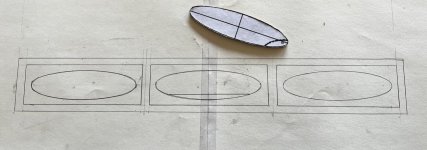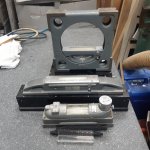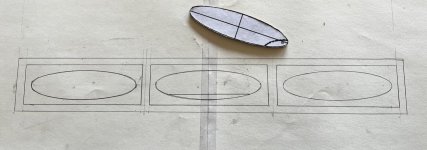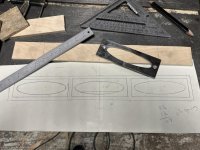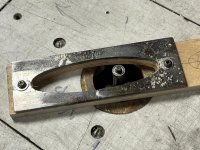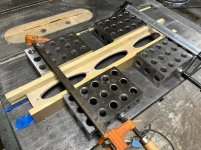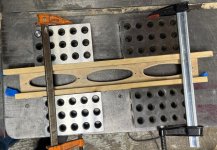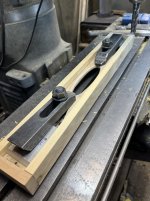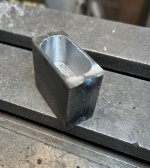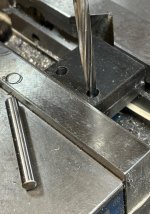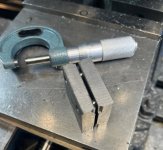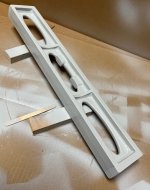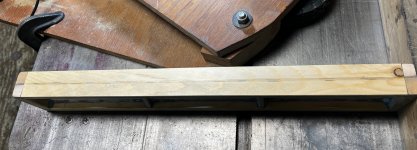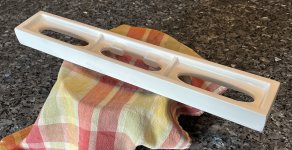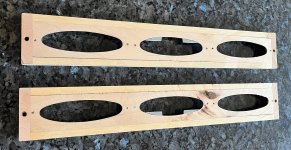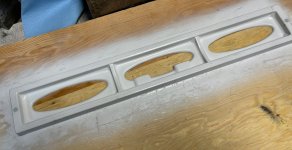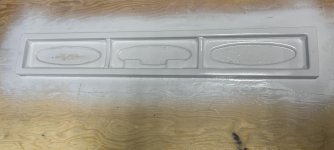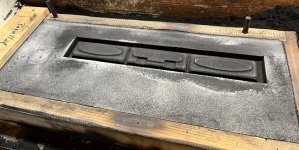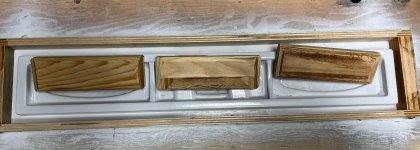dgfoster
Diamond
- Joined
- Jun 14, 2008
- Location
- Bellingham, WA
I have been sketching an 18" beam-like straight edge that will provide a mounting point for a precision level vial. It will be about 2.5" high and 1.5" deep. The depth will really be up to the end user as it will be designed so that it can be left full thickness or milled on the front and back to trim it down to about an inch thickness if desired.
In general terms it will have three 6" segments. Each six-inch segment will be separated from its neighbor by a vertical (likely curved) rib. Each segment will have a single oval window occupying much of the web of each segment. The central ovoid will have an oval outline but a rectangular window into which a level vial can be mounted, if desired. The best candidate for that vial that I am aware of (if there are other better choices, please let me know)
[h=2]4-3064-20[/h][h=2]Drawing Available[/h][FONT="]Highly sensitive mounted tubular level with adjusting studs, nuts, fulcrum and base with instrument black finish. Sensitivity: 20 seconds per division (2.0mm). Overall size: 3.00 inch L x 1.25 inch W x 1.25 inch H. Reference drawing for other dimensions and position of three (3) mounting holes.
[FONT="]The depth of this vial requires the 1.25" depth. For those not using the vial, it may be desirable to mill off some of the thickness.
In general the lines for the casting will be pleasing to the eye and graceful as I believe a tool should be both very functional and as beautiful as possible.
The castings, as are my other castings, will be made from ductile iron returns. (The castings will not themselves be ductile, but using ductile returns assures very high quality metal as opposed to scrounging junk, throwing it in the pot and pouring whatever comes out.) These castings will continue in the tradition of Featherweight castings being of the highest quality and they will be properly thermally stress-relieved as are all the castings I sell.
I think I will be able to supply these castings at a lower cost than my prisms as the simple beams will not require the more complex casting techniques required for the multi-tool prism forms.
If anyone has suggestions, I'd be most appreciative.
My target is to have something cast in the next 6 weeks.
In the long run I hope to cast 24 and 36 inch versions as well. Their dimensions will be a bit greater in depth and height. Every effort will be made to keep these as light in weight as possible and still retain excellent rigidity.
Denis[/FONT][/FONT]
In general terms it will have three 6" segments. Each six-inch segment will be separated from its neighbor by a vertical (likely curved) rib. Each segment will have a single oval window occupying much of the web of each segment. The central ovoid will have an oval outline but a rectangular window into which a level vial can be mounted, if desired. The best candidate for that vial that I am aware of (if there are other better choices, please let me know)
[h=2]4-3064-20[/h][h=2]Drawing Available[/h][FONT="]Highly sensitive mounted tubular level with adjusting studs, nuts, fulcrum and base with instrument black finish. Sensitivity: 20 seconds per division (2.0mm). Overall size: 3.00 inch L x 1.25 inch W x 1.25 inch H. Reference drawing for other dimensions and position of three (3) mounting holes.
[FONT="]The depth of this vial requires the 1.25" depth. For those not using the vial, it may be desirable to mill off some of the thickness.
In general the lines for the casting will be pleasing to the eye and graceful as I believe a tool should be both very functional and as beautiful as possible.
The castings, as are my other castings, will be made from ductile iron returns. (The castings will not themselves be ductile, but using ductile returns assures very high quality metal as opposed to scrounging junk, throwing it in the pot and pouring whatever comes out.) These castings will continue in the tradition of Featherweight castings being of the highest quality and they will be properly thermally stress-relieved as are all the castings I sell.
I think I will be able to supply these castings at a lower cost than my prisms as the simple beams will not require the more complex casting techniques required for the multi-tool prism forms.
If anyone has suggestions, I'd be most appreciative.
My target is to have something cast in the next 6 weeks.
In the long run I hope to cast 24 and 36 inch versions as well. Their dimensions will be a bit greater in depth and height. Every effort will be made to keep these as light in weight as possible and still retain excellent rigidity.
Denis[/FONT][/FONT]


